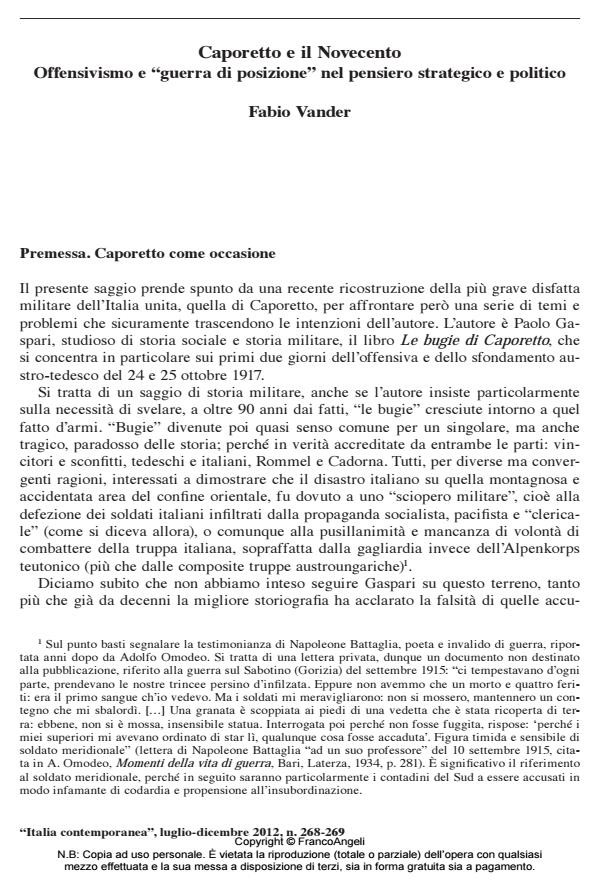Caporetto and the 20th Century. Attack strategy and "position warfare" in strategic and political thought
Journal title ITALIA CONTEMPORANEA
Author/s Fabio Vander
Publishing Year 2013 Issue 2012/268-269
Language Italian Pages 25 P. 472-496 File size 305 KB
DOI 10.3280/IC2012-268005
DOI is like a bar code for intellectual property: to have more infomation
click here
Below, you can see the article first page
If you want to buy this article in PDF format, you can do it, following the instructions to buy download credits

FrancoAngeli is member of Publishers International Linking Association, Inc (PILA), a not-for-profit association which run the CrossRef service enabling links to and from online scholarly content.
This essay offers a reassessment of the battle of Caporetto from an original viewpoint, i.e. the consideration of the strategic novelties brought about by that fundamental episode of WWI. A central role is assigned to the figure of Giulio Douhet, who just on that occasion denounced the failure of Cadorna’s attack strategy, proclaiming the advent of "position warfare" as the prevalent guideline for the Twentieth Century wars. We are thus introduced to the Italian side of the debate on "total war" - the fact that war was no longer a simple military matter, but it involved all of the communities at odds completely, from a moral no less than a material point of view. On the one part Douhet, who developed the motive of the political-military merger in totalitarian terms, and on the other Gramsci, who with his concepts of "position warfare" and "political cadornism" tried to extract capital political teachings from the experience of the Great War, most of all with regard to a "revolution" dissimilar to the "movement" one of the Bolshevik October.
Keywords: WWI, Caporetto battle, military strategy, "position warfare", "total war", Giulio Douhet, political strategy, Antonio Gramsci
Fabio Vander, Caporetto e il Novecento. Offensivismo e "guerra di posizione" nel pensiero strategico e politico in "ITALIA CONTEMPORANEA" 268-269/2012, pp 472-496, DOI: 10.3280/IC2012-268005